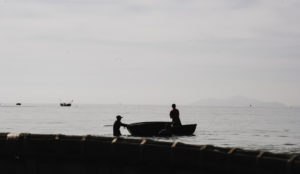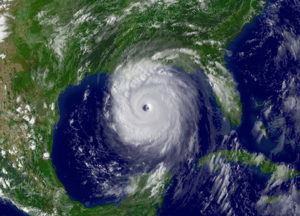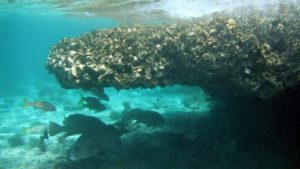Research Overview
We are community and ecosystem ecologists working mostly in coastal marine and estuarine habitats. Work in the Jurgens lab draws on experimental, observational, and modeling approaches to ask questions across a range of spatial and temporal scales. Our studies are providing new insights into processes that support ecological resilience in the face of multiple stressors and extreme events. We also work to evaluate practical solutions to conservation problems.
Coastal marine and estuarine ecosystems have been heavily exploited for centuries. They also experience pressures from both land and sea. Yet these ecosystems remain fundamental to the economies, food resources, coastal protection, culture, and recreation of more than three billion people worldwide, including along the Gulf coast of the United States.
Project Spotlight
How effective is dredge material at restoring foraging habitats for coastal birds?
We are beginning a project to answer this question in collaboration with Texas A&M Professor Anna Armitage and supported by the Coastal Management Program at the Texas General Land Office. The project will be conducted within the Salt Bayou ecosystem in the Lower Neches and J.D. Murphree Wildlife Management Areas of southeastern Texas.
Coastal wetland restoration projects often use dredge material (“spoils”) to elevate degraded areas so they can support marsh vegetation. One idea is that these new marshes will, in turn, support coastal birds foraging in these habitats. Birds select foraging habitat primarily based on food availability, so the value of these restored areas as bird habitat is closely linked to the abundance of swimming, crawling, and burrowing invertebrate animals (nekton, benthic fauna and infauna, in technical terms) that colonize the new sediments. It remains unknown how well these dredge materials are colonized by such invertebrates and therefore, how effective they are at restoring foraging habitats for birds.
We will sample invertebrates at 15 restoration sites in the Salt Bayou ecosystem to better understand habitat quality. This dataset will help managers better understand how to apply restoration practices to support resident and migratory birds, including waterfowl and shorebirds.
Research Themes
Predicting ecosystem responses to extreme events
We are already seeing increases in extreme events driven by human effects on the global climate system and on nutrient dynamics in coastal oceans. Examples are storms, marine heat waves, extreme cold snaps, hypoxia (low oxygen), and harmful algal blooms. These short-term disturbances can have long-term impacts on coastal marine ecosystems and human communities. Because of these severe impacts, extreme events are generating growing interest in ecology, and in socio-ecological network studies. While a wide body of theoretical work exists, our lab is one of the few that uses targeted experiments to understand the factors shaping ecological responses to extreme events.
Feedbacks between biological and environmental stresses
 Understanding how multiple global changes impact ecosystems requires embracing the complexity of interactions among environmental/physical and biological/ecological stressors. These interactions often occur over different time periods and different spatial scales (e.g., microhabitats, localities, regions). Our research uses scale-relevant experimental designs that test how various stressors interact in space and time to affect marine populations, communities, and ecosystems. In particular, we consider how changes in biological interactions that accompany species invasions and predator declines set the stage for ecosystems to respond differently to short-term physical disturbances.
Understanding how multiple global changes impact ecosystems requires embracing the complexity of interactions among environmental/physical and biological/ecological stressors. These interactions often occur over different time periods and different spatial scales (e.g., microhabitats, localities, regions). Our research uses scale-relevant experimental designs that test how various stressors interact in space and time to affect marine populations, communities, and ecosystems. In particular, we consider how changes in biological interactions that accompany species invasions and predator declines set the stage for ecosystems to respond differently to short-term physical disturbances.
Effects of positive species interactions on resilience
The last few decades have seen a surge of interest in positive species interactions (facilitation) in ecology and conservation. Certainly we know that a huge fraction of global species lives within habitats formed by other organisms—including forests, grasslands, coral reefs, mangroves, seagrass and algae stands, oyster reefs, and mussel beds. While we also know that such species strongly affect local physical conditions, we still know very little about how that in turn may affect the vulnerability of associated populations to climate warming. Our research investigates how foundation species affect global change processes by modifying the physical environment.

